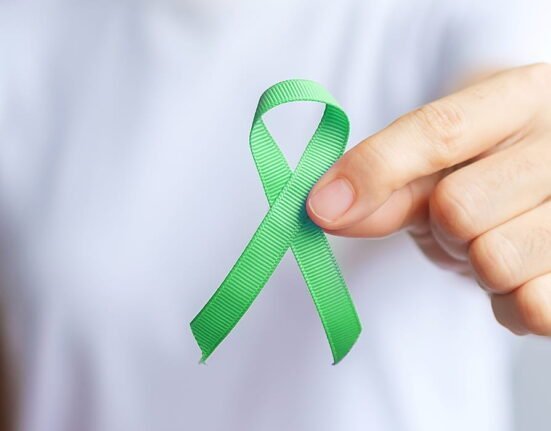Consider the example of a person entering a room of strangers and feeling an inexplicable bond with one of them due to a fleeting smile at that person or consider when one of your friends is saying how happy they are, but you are confused because their face is telling a different story. These types of situations exist every day around the globe as a result of non-verbal communication. Humans communicate non-stop even when there is no talking, through slight facial movements called microexpressions.
Unspoken words, and rather, the expressions that accompany them, are more often than not deceitful. Most of the time, these gestures divulge a person’s motives, feelings, and ideas. In social interactions, these snippets of movements form an integral part, albeit a small one, in helping the person gain insights, preconceptions, and notions about and towards the other person or social perception. An in-depth study of this particular part of social psychology, in particular the microexpressions and the effects they have on social perception, may assist in mapping out more intricate details about people and relationships.
What Exactly are Microexpressions?
In other words, microexpressions refer to signals a person expresses through uncontrollable movements, for example, eyelashes, in the course of much quicker portions of time than normal that correspond to a person’s actual feelings. As opposed to voluntary movements of the face which can be controlled, these movements are very different in that they are automatic and therefore cannot be faked.
This phenomenon was noted first by Haggard and Issacs in 1968 (when they labelled it micro momentary expressions). The term was later popularized by Ekman and Friesen, who studied the diversity of facial expressions and discovered seven of them that are deeply connected to human emotions:
- Sadness: The lips are slightly parted with the mouth corners pulled downward and the upper eyelids are lowered.
- Happiness: Wrinkles at the corners of the eyes, known as crow’s feet, with raised cheeks.
- Surprise: Eyes wide open and looking upward with parted lips and elevated eyebrows.
- Fear: The mouth is partly open, the upper eyelids raised and the lower eyelids tensed.
- Anger: Lips pressed together, eyebrows lowered converge with a flaring nose.
- Disdain disgust: Nose scrunched up and upper lip elevated.
- Scorn: Raising one side of the tightened lips cornered.
These expressions cannot be feigned and therefore act as a form of non-verbal communication which affects how people perceive and understand each other’s feelings.
Read More: Mastering Effective Communication: Building Trust and Strong Relationships
The Unspoken Influence of Microexpressions on Social Media Behavior
From the moment people meet, they send and receive different kinds of signals that help them gauge a situation, form assumptions, and act. In any type of relationship, informal or formal, social perception microexpressions are vital for making judgements, building trust, or understanding the social environment. Let us examine how microexpressions have an impact on social perceptions and social interactions:
1. Social Attention and Retention
Microexpressions extend from first impressions to trust imprints which can be formed instantaneously. First impressions are usually formed within seconds, as well as microexpressions, both differing in some aspects but sharing a common ground of emphasizing perception. It was already suggested that within a few milliseconds of seeing a face, we automatically register the person’s facial emotions and body language. Whether we label someone as friendly, competent, deceptive, or hostile will depend on microexpressions.
2. Influence of Relationships
Microexpressions are imperative in forming professional and personal relationships. People tend to trust non-verbal forms of communication more and use them to determine if someone is being truthful or not. For example, a person can synthesize words of gratitude upon receiving a packed gift; however, a fleeting look of disappointment around the eyes can offer a conflicting perspective of their true feelings.
Microexpressions also play a part in helping enhance customer satisfaction and sales, as well as in employing new workers and negotiating terms of contracts. In this way, interpreting the involuntary facial expressions of people can remarkably allow the management of social conflicts, social bonding, and building understanding.
3. Emotional Intelligence
Improving Emotional Intelligence involves recognizing the role microexpressions play. Emotions can be more accurately perceived making it easier to navigate social settings. For example, when a teacher notices a student looking anxious for a brief moment, he/she is likely to offer help which motivates the student to do better. Realizing and accepting other perspectives is also key to building the caring concept called empathy.
4. Lie Detection and Decision-Making
Microexpressions aid in lie detection by revealing the suppressed emotions that are not expressed consciously. They help interrogators to analyze facial cues to detect deception. They also assist in law enforcement, business negotiations and identifying unspoken concerns by patients during medical interactions. In all such cases, microexpressions provide critical insights that shape decisions and outcomes.
Psychological And Cultural Dimensions Of Microexpressions
Every culture has its interpretation of microexpressions based on the culture or certain personality traits of an individual. Generally, microexpressions are universal.
1. Personality And Emotional Control
Certain individual traits such as high self-control or introverted personality may obstruct the visibility of microexpressions. Meagre expressions require sophisticated interpretation because they hide their facial expressions more than other cultures.
2. Cultural Differences
Though the expressions are recognized universally, their frequency, intensity, and manner of expression can vary significantly. Collectivistic cultures often value emotional restraint while Individualistic cultures promote expressing emotions freely in both public and private settings. Such differences can significantly affect interpretation, and understanding them can promote cross-cultural communication.
Read More: How to Bring Self-control into Study Behavior: According to Psychology
Recognizing Microexpressions
Knowing how to read facial expressions is an important social skill and you don`t need to be an expert psychologist to improve your ability to read microexpressions. By following a few tips, observational skills can be sharpened:
- Actively Observing Others: Paying close attention to other`s faces while communicating, especially during emotional conversations.
- Using Online Training Programs: Training programs developed to help people recognize microexpressions can be used to understand others more effectively.
- Being Mindful Of The Context: Always consider tone of voice, body language, eye contact and other nonverbal cues and external factors before interpreting an expression.
- Emotional Awareness Development: Being aware of one’s own emotions and understanding them can help in recognizing them in others, too. The better we realize our emotions, the easier it is to detect them in others too.
- Exposure to Slow-Motion Videos: Eyes can be trained to recognize momentary expressions by watching emotional expressions in slow motion. Continuous exposure to such videos can help in recognizing them in real-world situations.
Ethics and Values
While having the ability to analyze microexpressions is a powerful and helpful tool, it is important to use it responsibly. Using it without making considerations about the cultural context, situational factors or personality traits can lead to misunderstandings and misinterpretations. Also, using the skills for manipulating or playing with someone`s emotions raises ethical concerns. As the saying goes with power comes responsibility, the power to recognize other expressions also comes with responsibility. Just like any other social tool, this tool should also be used for fostering communication, better understanding and empathy and not for malpractices.
Read More: How to Speak so that People Will Listen: Psychology Behind Communication
Conclusion
Microexpressions are hidden but powerful tools for understanding emotions and navigating social interactions. They have a profound impact on human interactions, influencing trust, first impressions, decision-making and perception formation. By understanding these social cues, we can enhance our communication and ability to connect with others and become more aware of social situations. While they provide powerful insights they should be interpreted with caution for a more accurate understanding of human behaviour. Hence, microexpressions are momentary, they have a lasting impression on the understanding of the social world.
FAQs
1. Are microexpressions always correct?
Microexpressions do reveal true emotions, but their accuracy depends on their interpretation concerning other non–verbal cues and the context in which they are being interpreted. Culture and personality traits can affect their appearance.
2. Do microexpressions work in online communication?
Since microexpressions are facial cues, they might not be as effective as they can be during face-to-face interactions.
3. How can understanding microexpressions help in daily life?
Understanding them can help in improving communication, trust-building, and strengthening relationships by fostering emotional intelligence.
4. Can anyone read microexpressions?
Yes, with practice and training, the ability to read them can be improved. However, ethical considerations need to be kept in mind while mastering them.
References +
Sagliano, L., Ponari, M., Conson, M., & Trojano, L. (2022). Editorial: The interpersonal effects of emotions: The influence of facial expressions on social interactions. Frontiers in Psychology, 13. https://doi.org/10.3389/fpsyg.2022.1074216
Paul Ekman Group, LLC. (2024, October 11). Micro Expressions | Facial Expressions | Paul Ekman Group. Paul Ekman Group. https://www.paulekman.com/resources/micro-expressions/
Cuncic, A., MA. (2024, December 3). How to Read Facial Expressions. Verywell Mind. https://www.verywellmind.com/understanding-emotions-through-facial-expressions-3024851 Yang, Y. (2024). Micro-expressions: A Study of Basic Reading and The Influencing Factors on Production and Recognition. Journal of Education Humanities and Social Sciences, 26, 1048–1053. https://doi.org/10.54097/y71ea179













Leave feedback about this